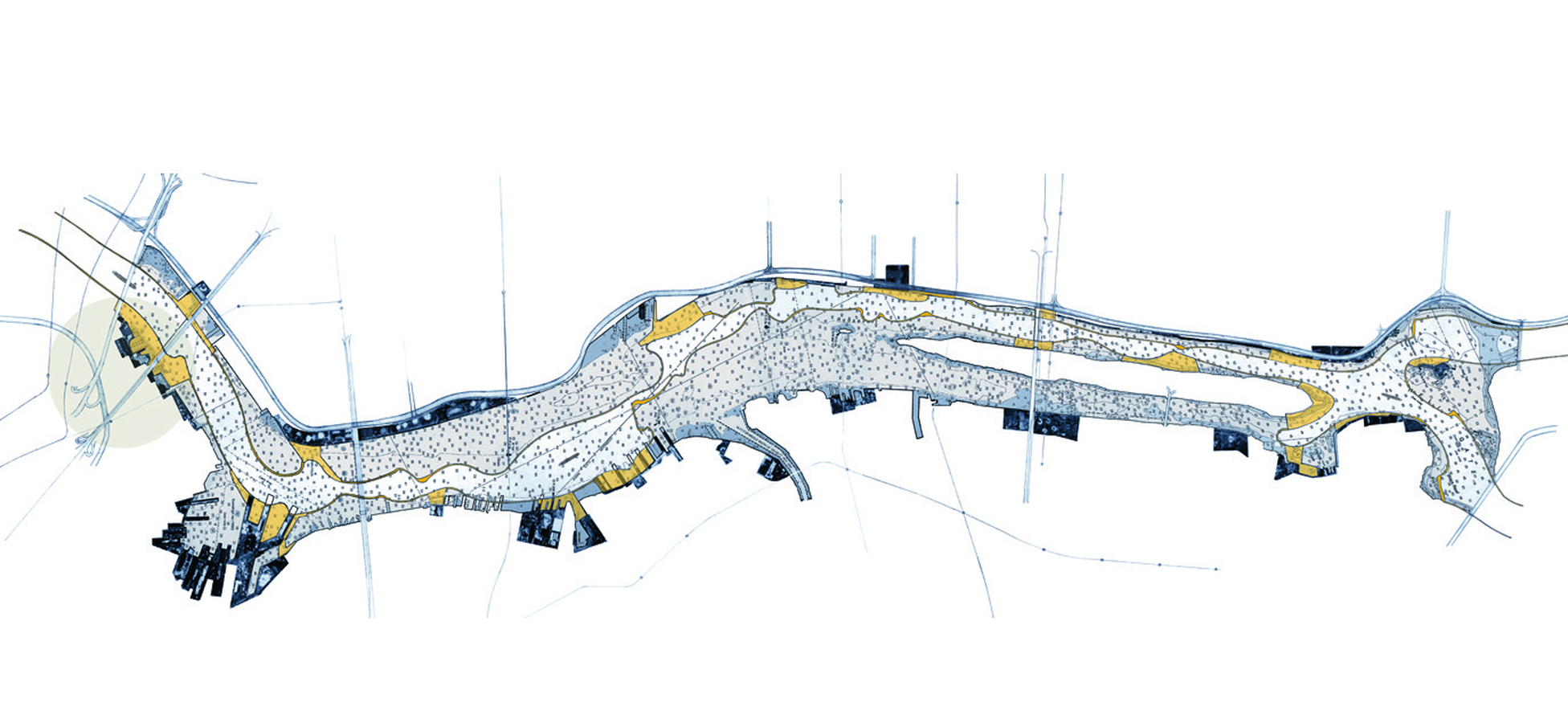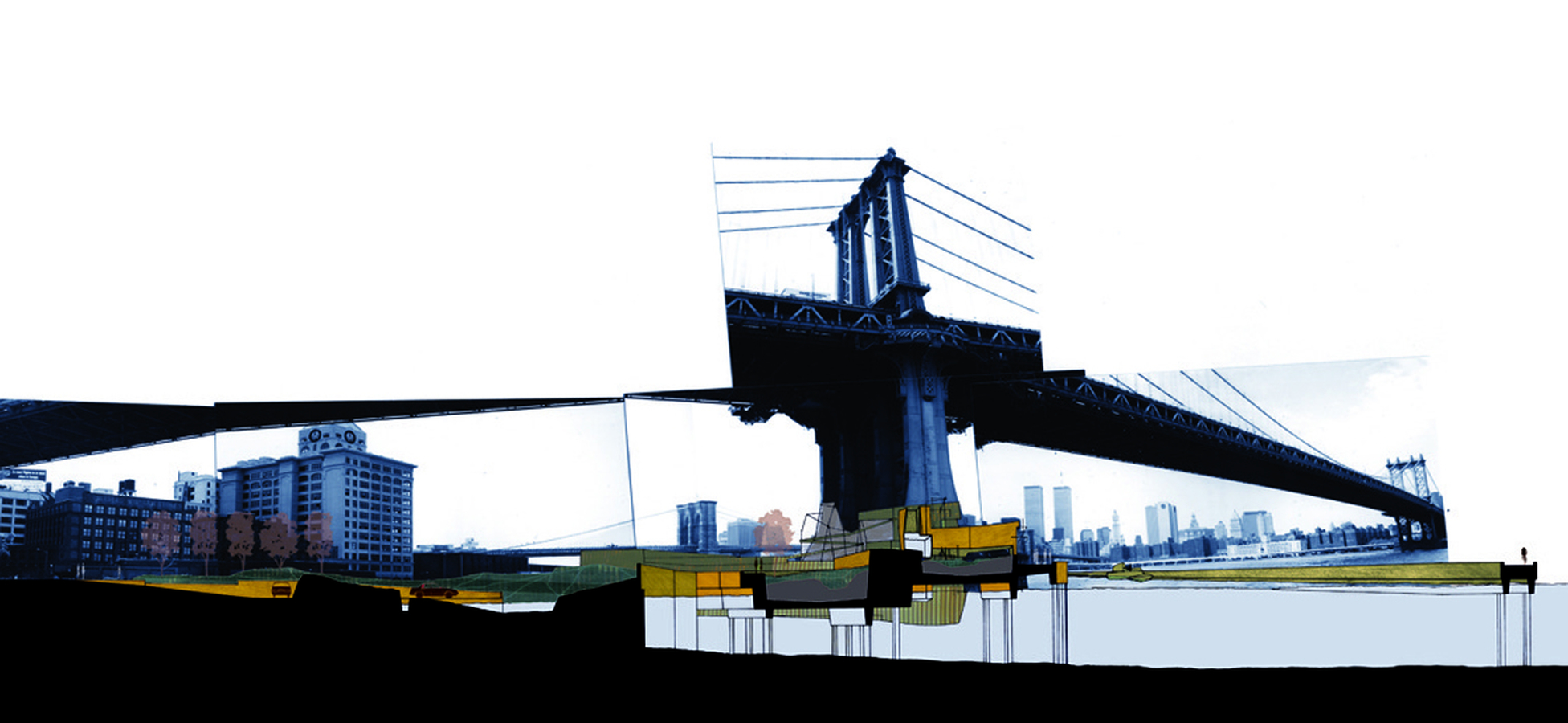



TIDAL LANDSCAPES
EAST RIVER: NEW YORK, NY
2nd Prize; Van Alen Institute Projects in Public Architecture
The ubiquitous, yet elusive and diaphanous nature of water makes it impossible to fully tame, to possess exclusively—it is the epitome of “public.” The East River, running through one of the most dense urban settings in the world, has the potential to be a public artery through the city, connecting its various inhabitants in a multitude of daily rituals and routes.
Once a trade circuit, the river carried much of the life blood of the city along its unnoticed and underappreciated course. The current dilapidated state of the edge condition, however, has transformed this artery into a barrier, isolating populations and preventing exchange on an urban scale. The unfulfilled potential of the East River offers opportunity for public exchange. Its realization is dictated through the commonality of water: water as public terrain .
Initial intervention into the river is the charting and insertion of a new occupiable path. This infrastructural armature serves to eliminate the present disconnectedness of the edge by linking and augmenting the scattered public and abandoned spaces that currently dot the riverbank. This insertion adds a new typology to the river while allowing for the continued functioning of the river’s vital trade, tourism, and travel activities. The path not only creates additional public space on the river itself, but also contemplates its internal evolution in the absorbsion of adjacent lots.
Animating the river is a fleet of floating program vessels which are received by the new terrains. These vessels are interchangeable, generating perpetually mutating landscapes for public congregation and play. Whether they contain a library, a meeting hall, or a produce market, each mobile vessel has the potential to activate both the water and the constructed ground through continual re-positioning into the many localities. As a result, the river itself is re-animated and achieves its pubic potential.
The migratory nature of these landscapes allows them to respond to the daily estuarial fluctuations of the river. The natural ebb and flow of the water both merges with and imposes itself upon the context of public program and occupation, actively affecting the ground condition. In this way, the cyclical imposition of the tidal water is primary in the inhabitant’s perception of physical accessibility and boundary. Thus, public program, terrain, and occupation simultaneously respond and react to the ever-changing conditions of these new tidal landscapes, fulfilling the communal promise of the river itself
